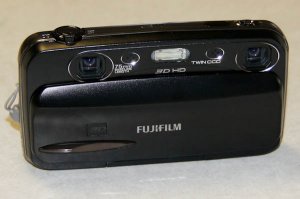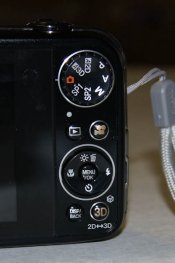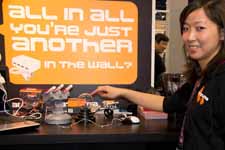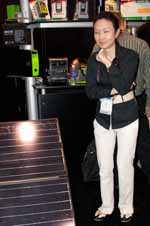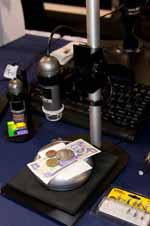Online Magazine
Recent Posts
- Safeguard your Cellphone Photos
- Black & White to Color – Instantly
- Wearing Many Hats
- Video Roundup
- Rescuing Your Blurry Pictures
- Showing Their Age
- What is Your Angle?
- Panorama Photos
- Humorous Photos
- Close Ups
- Fisheye Pictures
- Photo Antiquities
- Printing Big
- Appreciating Scale
- Celebrity Sightings
Tags
More Places to Go
- Free "How-To" Books “How To” books for popular cameras 0
- Vist Us on Facebook keep in touch with us on Facebook 2
Archives
- July 2023 (1)
- March 2023 (2)
- February 2023 (1)
- December 2022 (1)
- October 2022 (1)
- September 2022 (8)
- August 2022 (9)
- July 2022 (1)
- June 2022 (1)
- June 2021 (1)
- May 2021 (1)
- March 2021 (5)
- February 2021 (4)
- January 2021 (2)
- April 2019 (1)
- March 2019 (1)
- February 2019 (1)
- October 2018 (2)
- April 2018 (1)
- March 2018 (4)
- February 2018 (1)
- November 2017 (1)
- August 2017 (1)
- June 2017 (1)
- April 2017 (1)
- March 2017 (5)
- February 2017 (2)
- January 2017 (1)
- October 2016 (1)
- September 2016 (1)
- August 2016 (1)
- July 2016 (1)
- May 2016 (1)
- April 2016 (1)
- March 2016 (2)
- February 2016 (1)
- January 2016 (2)
- December 2015 (1)
- November 2015 (1)
- October 2015 (3)
- April 2015 (1)
- March 2015 (5)
- February 2015 (1)
- January 2015 (4)
- December 2014 (2)
- November 2014 (5)
- October 2014 (2)
- September 2014 (1)
- August 2014 (2)
- July 2014 (1)
- May 2014 (1)
- April 2014 (5)
- March 2014 (5)
- December 2013 (2)
- November 2013 (18)
- October 2013 (1)
- September 2013 (1)
- August 2013 (1)
- July 2013 (1)
- June 2013 (3)
- May 2013 (1)
- April 2013 (2)
- March 2013 (1)
- February 2013 (1)
- January 2013 (1)
- December 2012 (1)
- November 2012 (2)
- October 2012 (2)
- September 2012 (5)
- August 2012 (2)
- July 2012 (1)
- June 2012 (1)
- May 2012 (1)
- April 2012 (4)
- March 2012 (1)
- February 2012 (1)
- January 2012 (3)
- December 2011 (1)
- November 2011 (3)
- October 2011 (1)
- September 2011 (2)
- August 2011 (2)
- June 2011 (3)
- May 2011 (4)
- April 2011 (8)
- March 2011 (8)
- February 2011 (10)
- January 2011 (6)
- December 2010 (11)
- November 2010 (14)
- October 2010 (6)
- September 2010 (12)
- August 2010 (2)
- July 2010 (4)
- June 2010 (3)
- May 2010 (1)
- April 2010 (1)
- March 2010 (2)
- February 2010 (1)
- January 2010 (1)
- December 2009 (1)
- November 2009 (2)
- October 2009 (2)
- September 2009 (1)
- August 2009 (3)
- July 2009 (2)
- June 2009 (1)
- May 2009 (2)
- April 2009 (1)
- March 2009 (2)
- February 2009 (1)
- January 2009 (3)
3D Photography – the next big thing?
02nd April 2011
A Look at the Panasonic Real 3D W3 camera
I’ll have to admit that I wasn’t particularly interested in 3D photography and video until I took a walk through the aisles of CES this past January.
Among the major television makers LG, Panasonic, Samsung, Sharp and Sony all had huge displays demonstrating some very impressive 3D capabilities.
From the fanfare that they were lavishing on their new equipment, it appears that the major electronics manufacturers are counting on 3D to be a big part of their revenue in the next few years.
I purchased the Real 3D W3 in February at a cost of just slightly over $300. For more information about the W3 visit Fujifilm.
For more information about the 3D stereo lens set contact Panasonic.
For more information about the 3D Sweep Panorama feature contact Sony.
Please note that Stay Focused has no connection to Fujifilm.
Written by Arnie Lee
Neat Stuff at the CES
13th January 2011
The 2011 Consumer Electronics Show
| You might think that after more than twenty-five years of attending the Consumer Electronics Show, I’d grow weary of the annual (CES used to take place twice a year) trek. Showhow, there’s always lots of excitement in getting your hands on some of the new gadgets that will soon be making their way to the market. |
 |
| This year some 126,000 members of the trade and press attended the show. Some 2700 exhibitors rented 1.6 million square feet of space at the Las Vegas Convention Center to show off their new products. The industry is hoping that this is a sign that the consumer electronics market is on a rebound. | |
 |
|
| Still recovering from the economic recession, Las Vegas and the casinos welcomed CES. In fact, I read that the Strip casinos were sold out on Thursday and Friday nights – the first time this has happened in many months.
Las Vegas was relatively cold – low 50’s during the day and 30’s during the evening. But the temperature at the convention center was definitely warmer and the halls overflowing with anxious showgoers. |
|
| First off, I headed over to the LVCC and made my way to the press room. I was surprised to see more than 50 internet-enabled computers and wireless routers available for press members.
It’s apparent that the electronics industry wants the CES show to receive maximum news and press coverage. No doubt, you’ve already seen products from CES on national television stations and newspapers. |
 |
| As I walked through the aisles, one of the biggest attention grabbers was an onslaught of 3D televisions.
Among the television makers LG, Panasonic , Samsung, Sharp and Sony all had huge displays demonstrating their 3D capabilities. You’ll need those cool 3D shades to watch the new content which has been slowly making its way to Blu-ray DVDs and certain satellite and cable providers. |
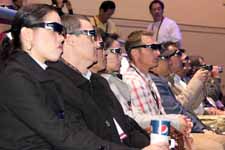 |
| Panasonic is definitely taking steps to add content to 3D televisions. In March they plan to have a 3D lens set that fits on their Micro Four-Thirds cameras.
This has two separate lenses that produces a set of digital image that can be displayed directly on their 3D television. |
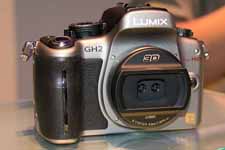 |
| The other big attention grabber was the tablet computers. As I approached the booths at Samsung and Panasonic I was amazed to see the number of visitors examining the new hardware and asking questions.
This unique Samsung Series 7 doubles as a tablet and a keyboard-equipped laptop. The keyboard slides out from the 10″ screen for easy typing tasks. |
 |
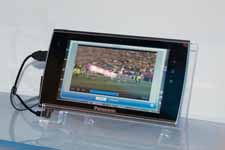 This is a prototype from Panasonic |
 This 7″ Samsung Galaxy drew three-deep crowds. It’s an Android device that competes with Apple’s iPad. |
|
Here’s a quick rundown of some of the new or upcoming products that I found interesting. |
|
|
|
|
|
 Here’s an attractive group of notebook and camera bags from Artisfront. |
|
|
|
|
 The Eye-Fi is an “enhanced” SD card for digital cameras. It can send images directly to your computer while it’s still in the camera! I’m planning a review of the Eye-Fi soon. From Eye-Fi. |
|
|
|
|
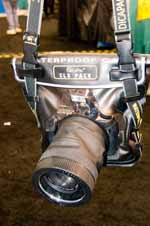 To keep your camera equipment dry in inclement weather DiCAPac has a waterproof “case” for your DSLR. Price is about $89. From DiCAPac. |
|
|
|
|
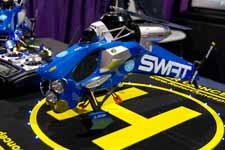 It may look like a toy, but this remote controlled helicopter has a small camera mounted in the nose which can send digital images to your wi-fi network. Useful for taking photos from above. From Rotor Concept. |
|
|
|
|
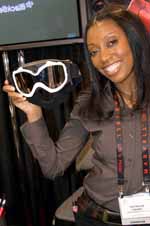 Liquid Image also makes these ski goggles with a ruggedized built-in camera. Again this has a 5MP still/video camera and sells for about $250. From Liquid Image. |
|
|
|
|
 For those times when you may have had too much fun and liquid refreshments you can use this convenient breathalyzer. It fits in your pocket and may come in handy. From BacTrack. |
|
|
|
|
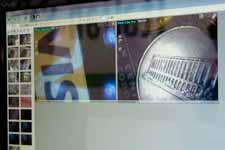 This is a close-up taken with the Dino-Lite’s 5MP imager. You can see that the coin is free from shadows because of the built-in light and polarizing filter around the device’s imager. I am told that it’s especially popular with stamp and coin collectors. It has variable magnification from 10x – 50x, and optionally up to 220x. |
|
|
|
| I stopped at the Panasonic booth to have a look at the GF-2 Micro Four-Thirds camera which is scheduled to be available in March.
Since I wasn’t fond of composing and focusing through the LCD finder, I asked the CSR to attach the electronic viewfinder (not shown). With an EVF, a sleek body, light weight and fast response, I’m looking forward to testing out the GF-2 soon. |
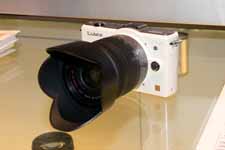 |
|
|
|
| For the vain among you, you can use the QuikPod to capture your own picture with your digital camera. There are two models: one for smaller point-and-shoot cameras and other for DSLR cameras. Each is a handheld extendable tripod. Attach your camera, set it on self-timer, press the shutter and position the QuikPod for a self-portrait as you smile.
It’s also useful for handheld shots above the crowd. Comes with tripod legs for use as a conventional tripod. Price is $29 for point-and-shoot model and $49 for DSLR model. From QuikPod |
 |
|
In the next few weeks, I plan to review some of the products that you’ve seen here. While the weather in Las Vegas wasn’t particularly warm, on the flight home I found myself stuck in Chicago for 7 additional hours because of snow. I guess I shouldn’t complain about the weather in Nevada. |
|
Written by Arnie Lee
Water Fun
04th September 2010
Sadly, summer is quickly drawing to an end in our part of the world. We’ve been blessed with unusually hot and sunny weather which means that water sports have been a vital part of the our recent recreational activities.
For the most part, water and cameras don’t mix well. But by taking a few precautions, you can minimize any danger to your camera at the pool or beach when capturing the fun. And if you’re a serious outdoor fanatic, you can make a waterproof camera part of your photo gear.
(more…)

